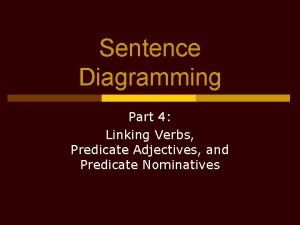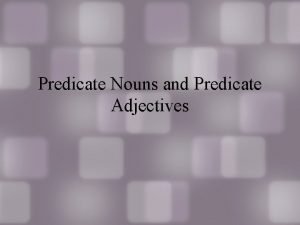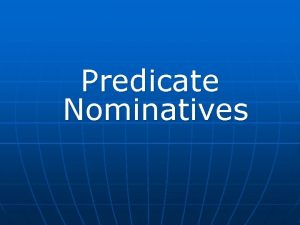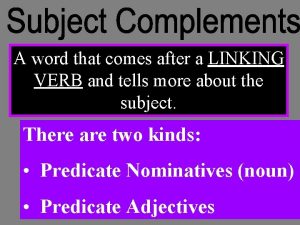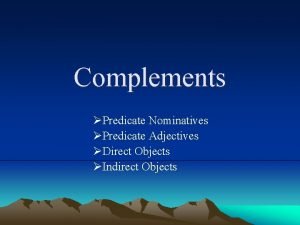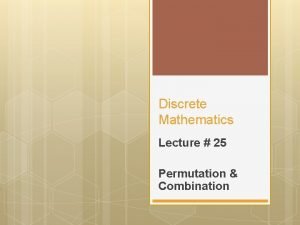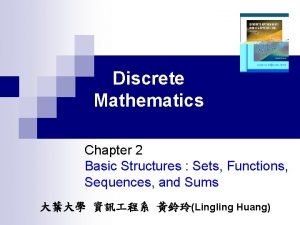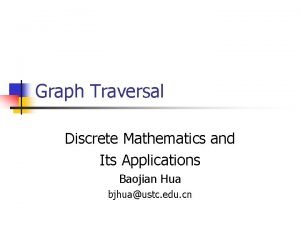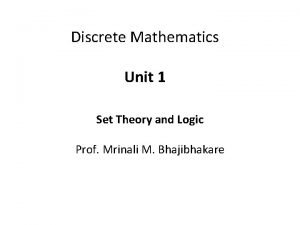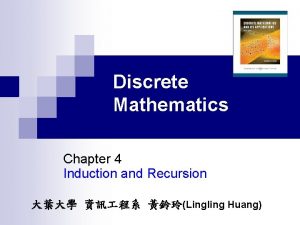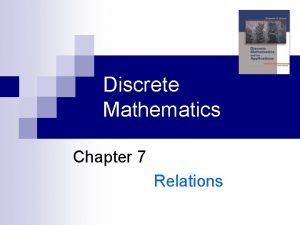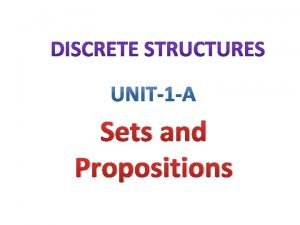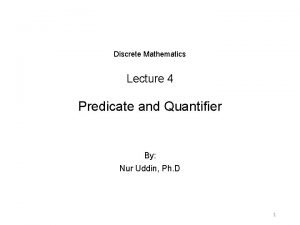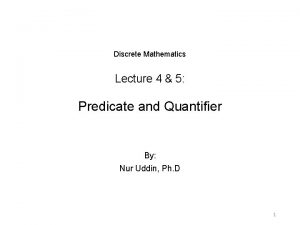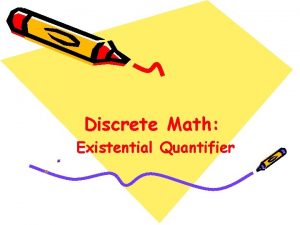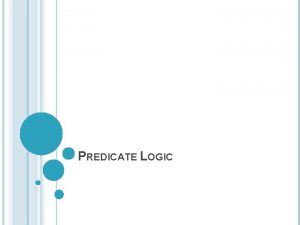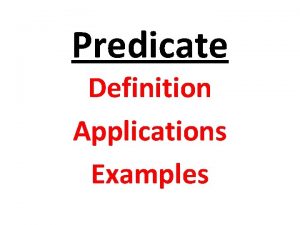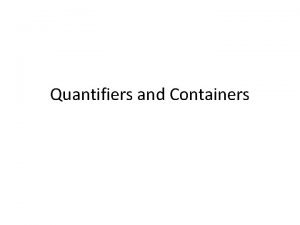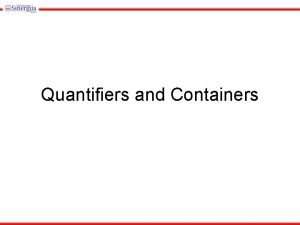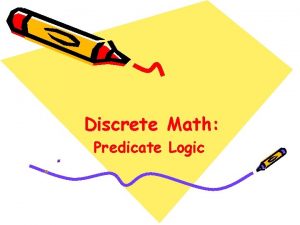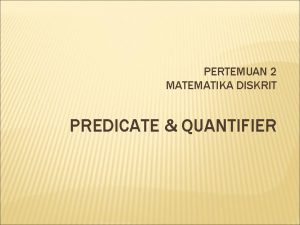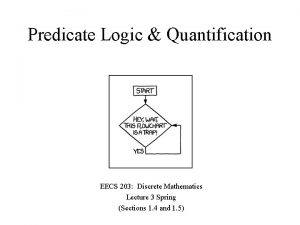Discrete Mathematics Lecture 4 5 Predicate and Quantifier













- Slides: 13

Discrete Mathematics Lecture 4 & 5: Predicate and Quantifier By: Nur Uddin, Ph. D 1

Motivation • Propositional logic cannot adequately express the meaning of all statements in mathematics and in natural language. • We will introduce a more powerful type of logic called predicate logic. • How predicate logic can be used to express the meaning of a wide range of statements in mathematics and computer science in ways that permit us to reason and explore relationships between objects. 2

Predicate • The statement “x is greater than 3” has two parts: • The first part, the variable x, is the subject of the statement. • The second part—the predicate, “is greater than 3”—refers to a property that the subject of the statement can have. • We can denote the statement “x is greater than 3” by P(x), where P denotes the predicate “is greater than 3” and x is the variable. • The statement P(x) is also said to be the value of the propositional function P at x. • Once a value has been assigned to the variable x, the statement P(x) becomes a proposition and has a truth value 3

Examples 1. Let P(x) denote the statement “x > 3. ” What are the truth values of P(4) and P(2)? 2. Let Q(x, y) denote the statement “x = y + 3. ” What are the truth values of the propositions Q(1, 2) and Q(3, 0)? 4

Quantifiers • When the variables in a propositional function are assigned values, the resulting statement becomes a proposition with a certain truth value. • However, there is another important way, called quantification, to create a proposition from a propositional function. Quantification expresses the extent to which a predicate is true over a range of elements. • In English, the words all, some, many, none, and few are used in quantifications. 5

Quantification types • Two types of quantification: 1. 2. Universal quantification tell us that a predicate is true for every element under consideration existential quantification tells us that there is one or more element under consideration for which the predicate is true. • The area of logic that deals with predicates and quantifiers is called the predicate calculus. 6

Universal Quantifier • Many mathematical statements assert that a property is true for all values of a variable in a particular domain, called the domain of discourse (or the universe of discourse), often just referred to as the domain. 7

Universal Quantifier Example: 8

Universal Quantifier Example: 9

Existensial Quantifier Besides the phrase “there exists, ”we can also express existential quantification in many otherways, such as by using the words “for some, ” “for at least one, ” or “there is. ” The existential quantification ∃x. P(x) is read as: “There is an x such that P(x), ” “There is at least one x such that P(x), ” “For some x. P(x). ” 10

Existensial Quantifier Example 1: Example 2: 11

The Uniqueness Quantifier • The uniqueness quantifier, denoted by ∃! or ∃1. • The notation ∃!x. P(x) or [∃1 x. P(x)] states “There exists a unique x such that P(x) is true. ” • For example, ∃!x(x − 1 = 0), where the domain is the set of real numbers, states that there is a unique real number x such that x− 1=0. This is a true statement, as x = 1 is the unique real number such that x − 1 = 0. 12

Homework 1 1. 2. 13
 Predicate nominative and predicate adjective
Predicate nominative and predicate adjective Predicate noun examples
Predicate noun examples Predicate nominatives
Predicate nominatives Diagram predicate nominative
Diagram predicate nominative Predicate nominative vs predicate adjective
Predicate nominative vs predicate adjective Predicate nominative and predicate adjective
Predicate nominative and predicate adjective Complete subject examples
Complete subject examples Permutation and combination in discrete mathematics
Permutation and combination in discrete mathematics Sets and functions in discrete mathematics
Sets and functions in discrete mathematics Graph traversal in discrete mathematics
Graph traversal in discrete mathematics Idempotent law
Idempotent law Induction and recursion discrete mathematics
Induction and recursion discrete mathematics Reflexive relation example
Reflexive relation example Sets and propositions in discrete mathematics
Sets and propositions in discrete mathematics
